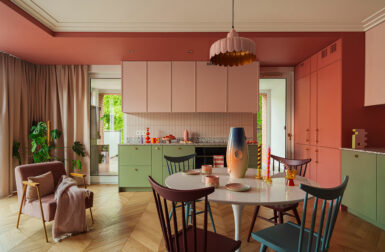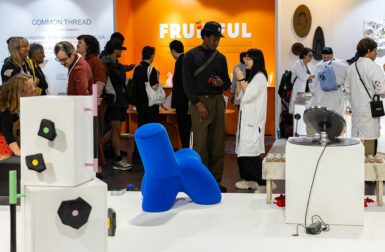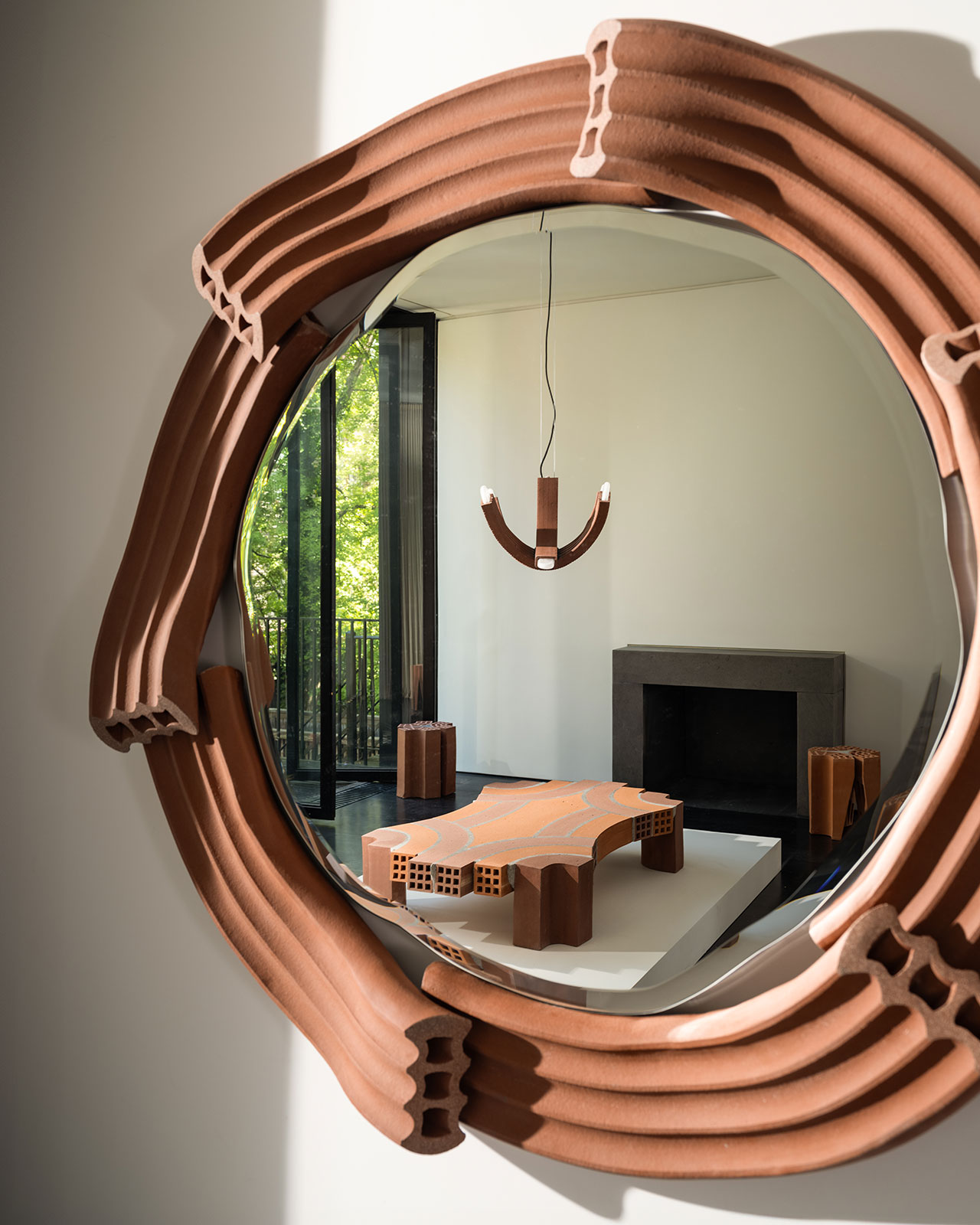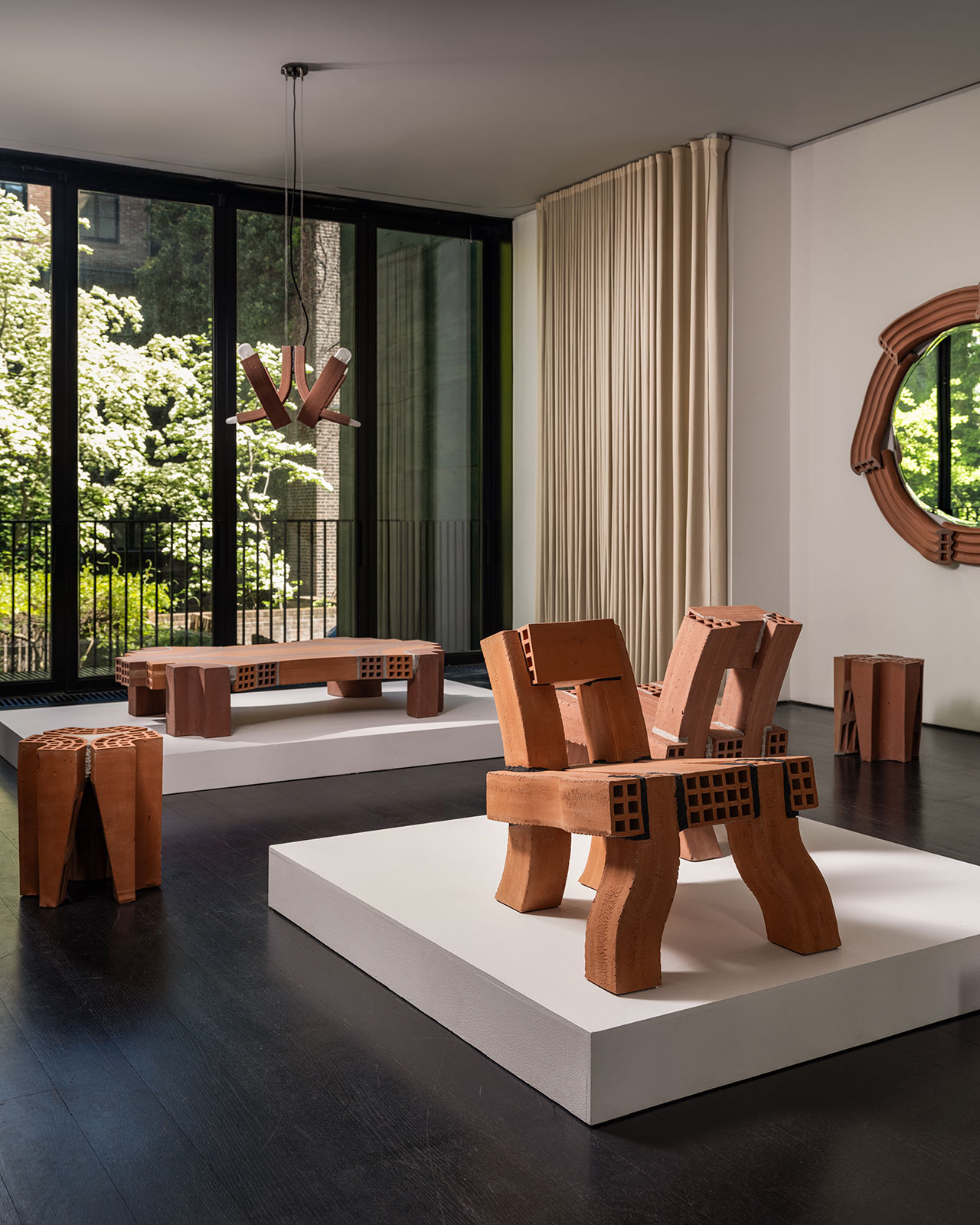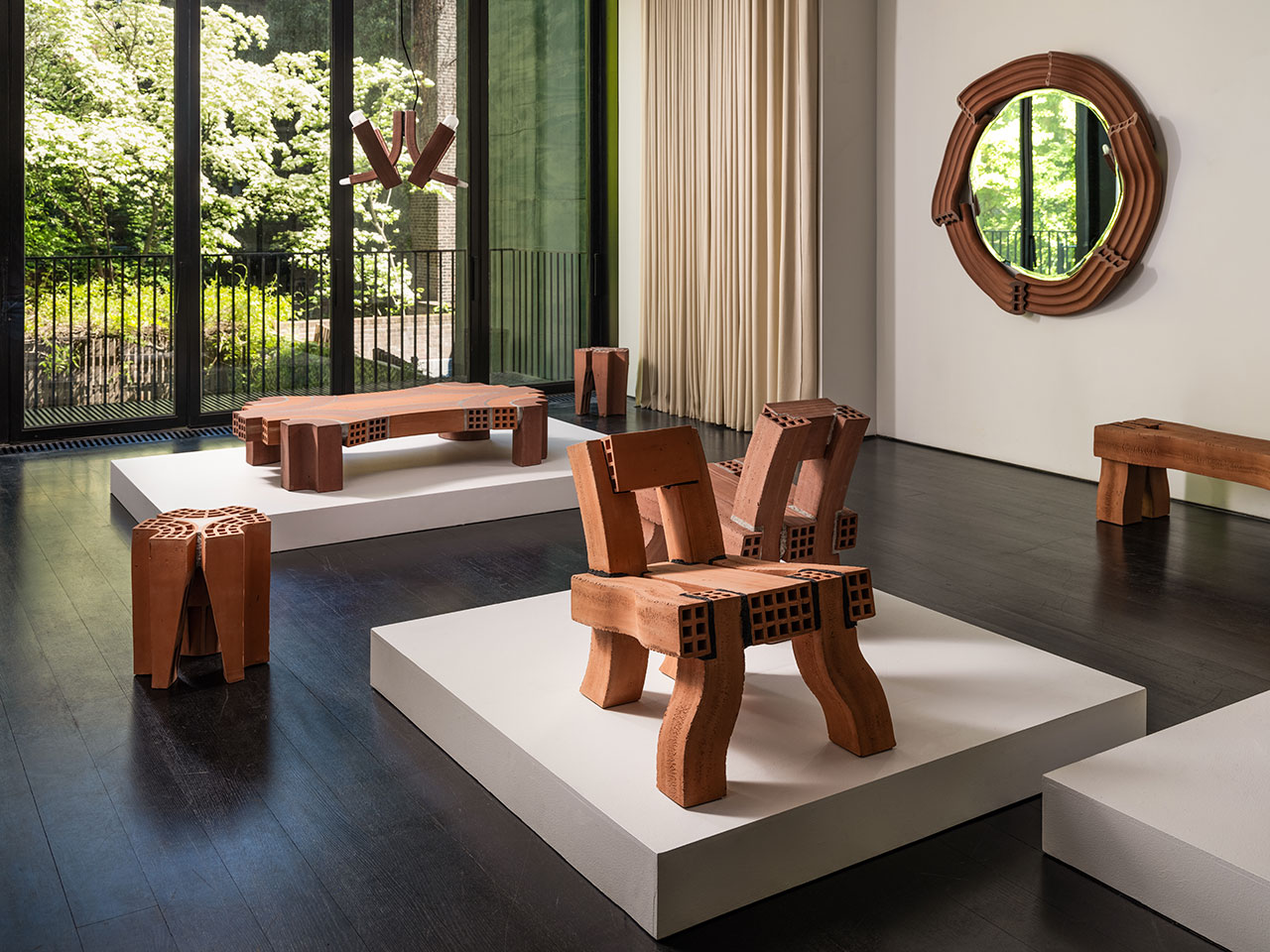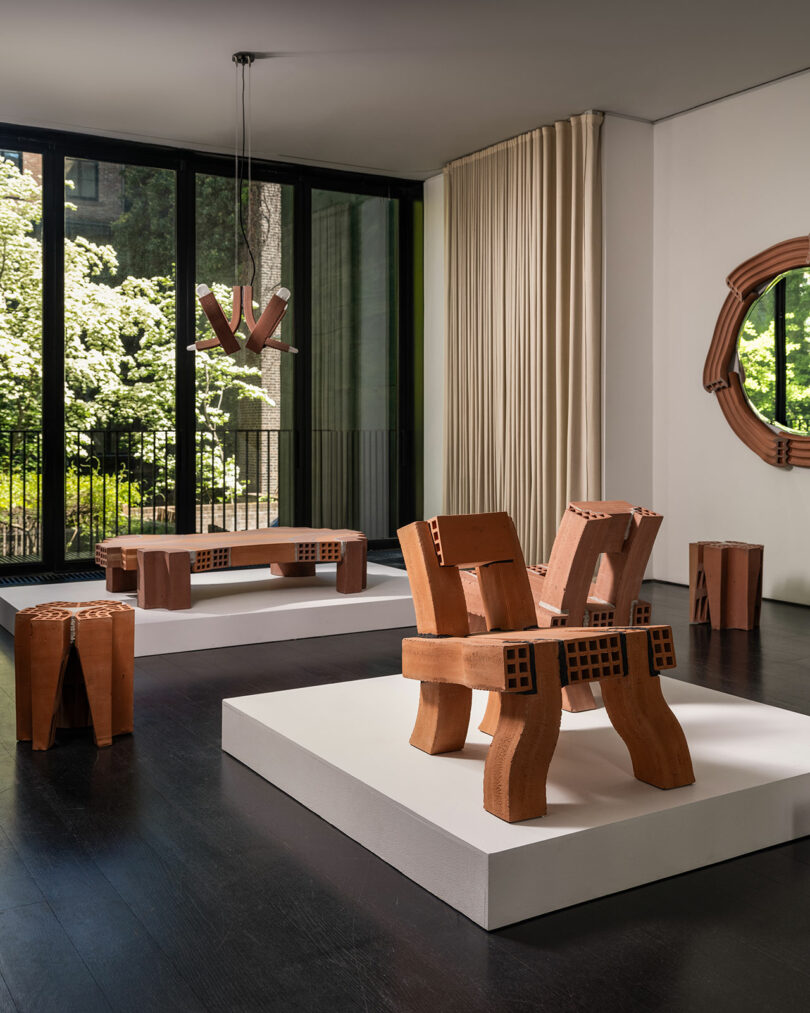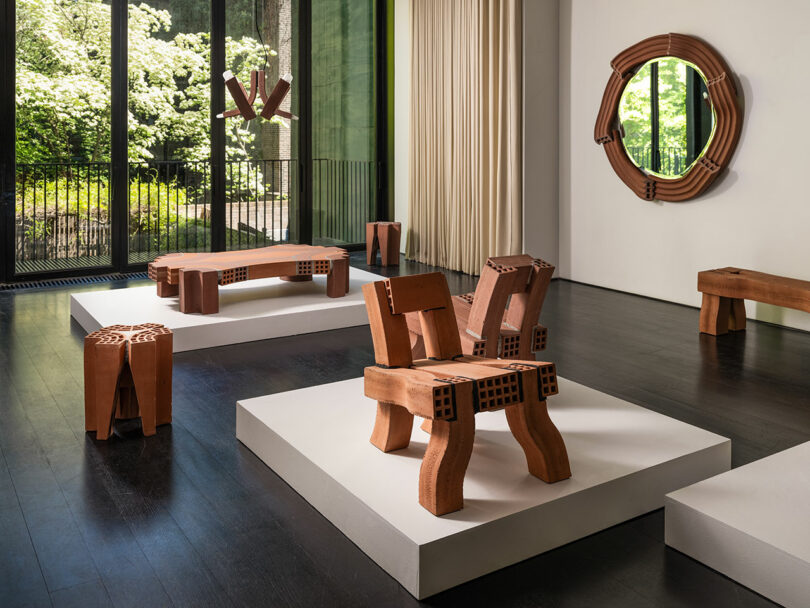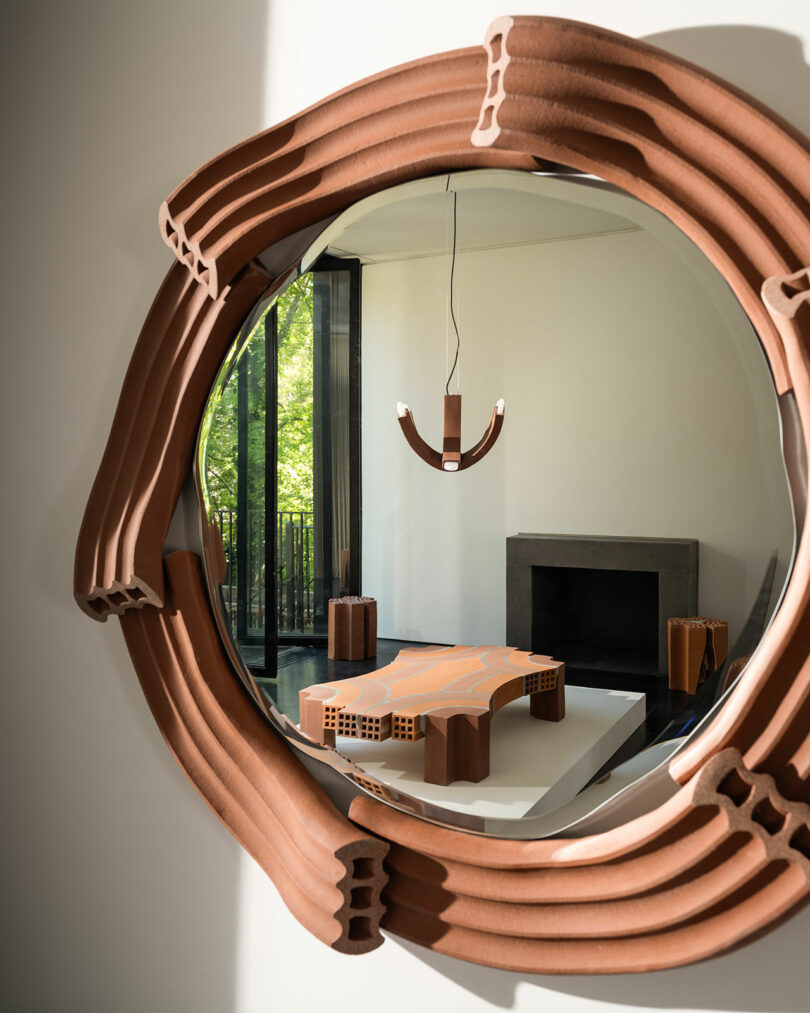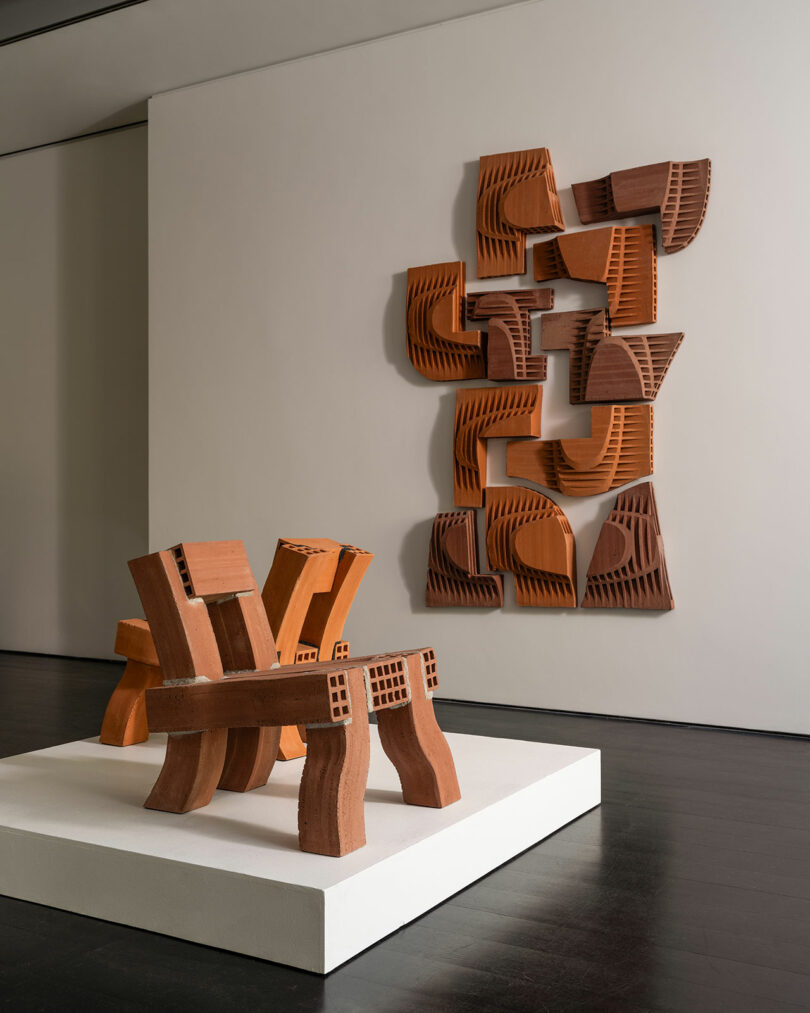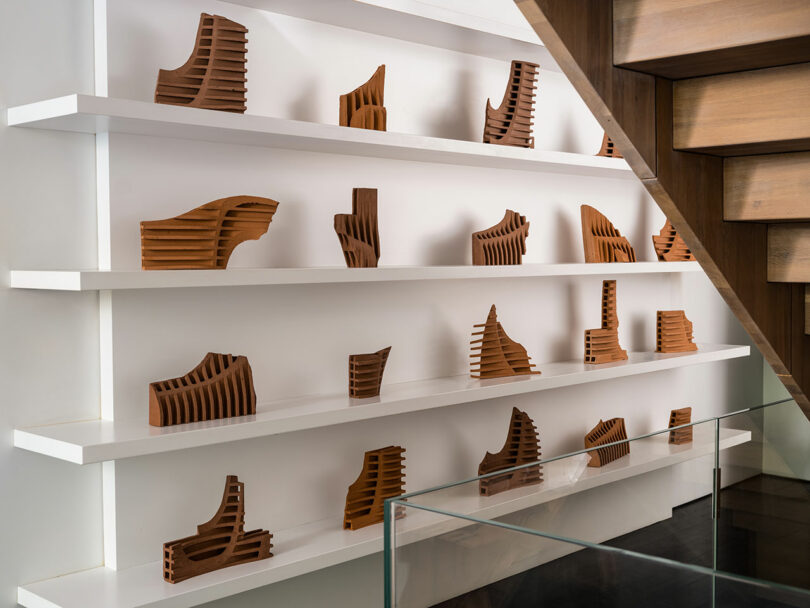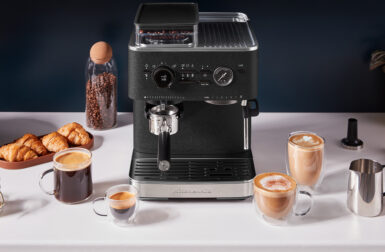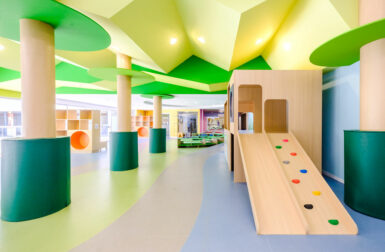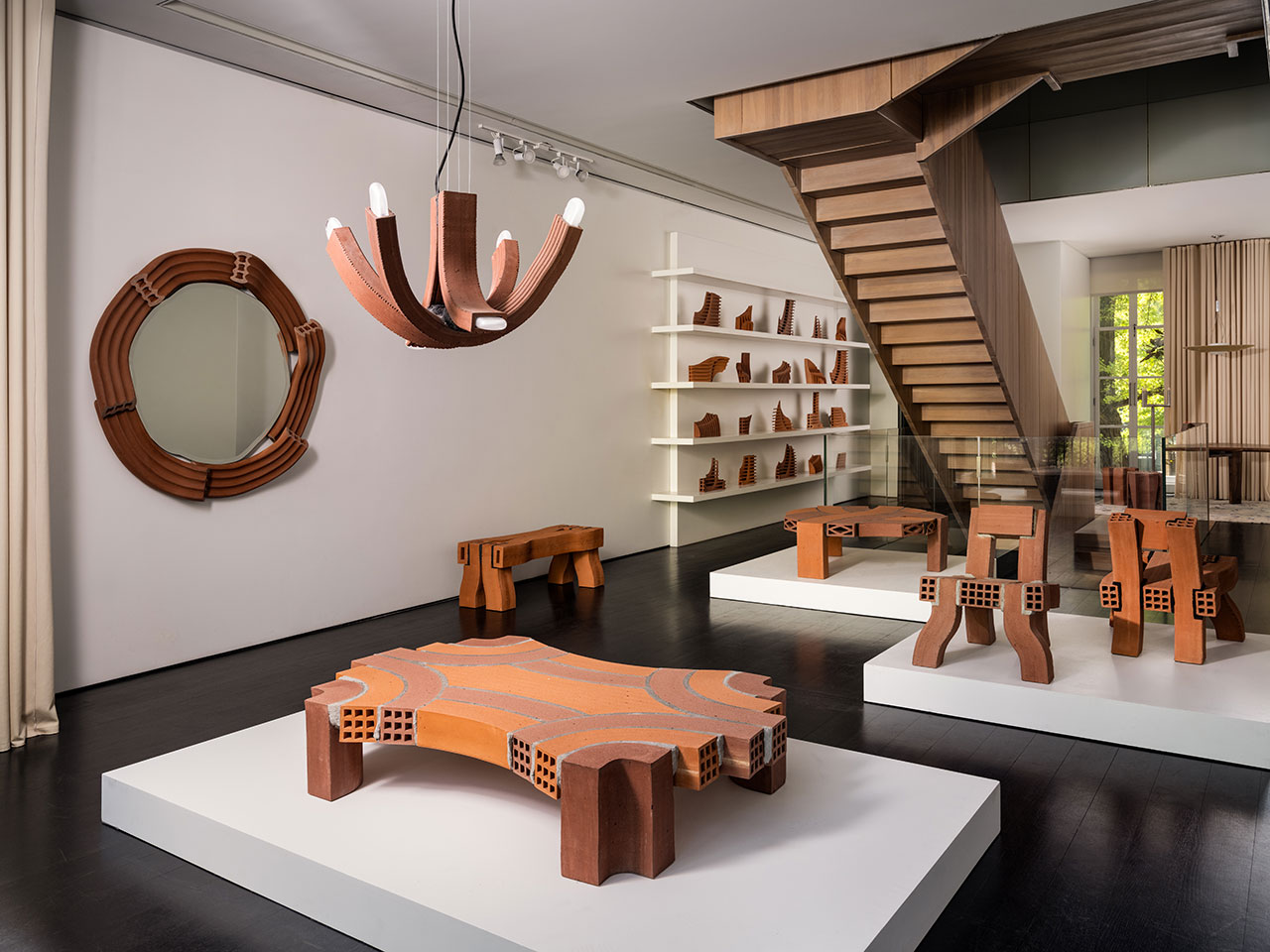
What does brick want to be? While steel and glass rely on their inherent physical properties or the power of thinness to impress, brick and mortar are often seen as basic, relegated to a plebeian class of material often unfairly shared alongside textiles within the context of contemporary art. Challenging this cultural connotation is Netherlands-based artist Floris Wubben whose solo exhibition on view at The Future Perfect, aptly named BRICK, rejects that premise altogether in a series of arguments presented as home furnishings in an occasion that coincides with the 400th anniversary of New York City’s founding – and an architectural heritage built with Dutch-made bricks.
Comprising a chandelier, benches, a desk, chairs, a coffee table, stools, a mural, and sculptural totems, as well as standing and wall mirrors, Wubben’s functional art balances utility with aesthetics for a design imbued with purpose and meaning. The showcase reveals brick’s magisterial potential and capacity for surface animation previously unexplored beyond architectural practice, and at an intimate scale that rivals iconic design from the heydays of Prairie style. Raw red clay also proves to be a prolific medium in a departure from his usual ceramics as extruded brick articulates movement and structure through elongated rectilinear, undulating forms in an entirely new typology for the traditional building block.
Over the course of two years, Studio Floris Wubben employed proprietary techniques, contemporized historic methods, and home-built extrusion machines to fully realize the artisanal collection. And in a nod to Dutch brick-making, the designer chose to highlight material heritage using clay sourced from Dollard Polder, an area located in the Northern Netherlands, which surrounds the fabrication facilities. This earthen substance boasts a unique point of origin and is ideal for extrusion due to its naturally greasy texture, which allows for precise shaping and molding. “The discovery of the profound link between New York and Dutch brick inspired this collection,” Wubben says. “Even though the Groninger brick was not the type of brick exported from the Netherlands to New York in the past, the BRICK Project continues the tradition in a new way.”
Challenges, nay highlights, of the assemblage include artifacts like the chandelier and hanging wall mirror. Four sinuous extruded bricks converge to form the luminaire – in something akin to a knot being tied – with six fluorescent lights embedded into the hollowed ends. It appears weightless despite its physical mass, subverting expectations of the typically heavy, rectilinear material. The wall mirror also appears to defy physics, resisting gravity as six curvilinear elements seemingly circle the reflective central glass portal. Up close, viewers can see the contrasting components flirting with connection – and the fine, sometimes wriggly edge between the two.
Brick remains one of the most fundamental, foundational, and artfully primordial building blocks for humanity. “I love it when people have a certain fascination with bricks,” Wubben says. “I’ve heard many interesting stories about bricks from other countries. Bricks are different everywhere because it is a very local product.” So what does brick want to be? Anything and everything.
Floris Wubben: BRICK is on view at The Future Perfect showroom in St. Luke’s Townhouse, in New York City by appointment only until June 21, 2024. To schedule a visit please go to thefutureperfect.com.
Photography by Joseph Kramm.
